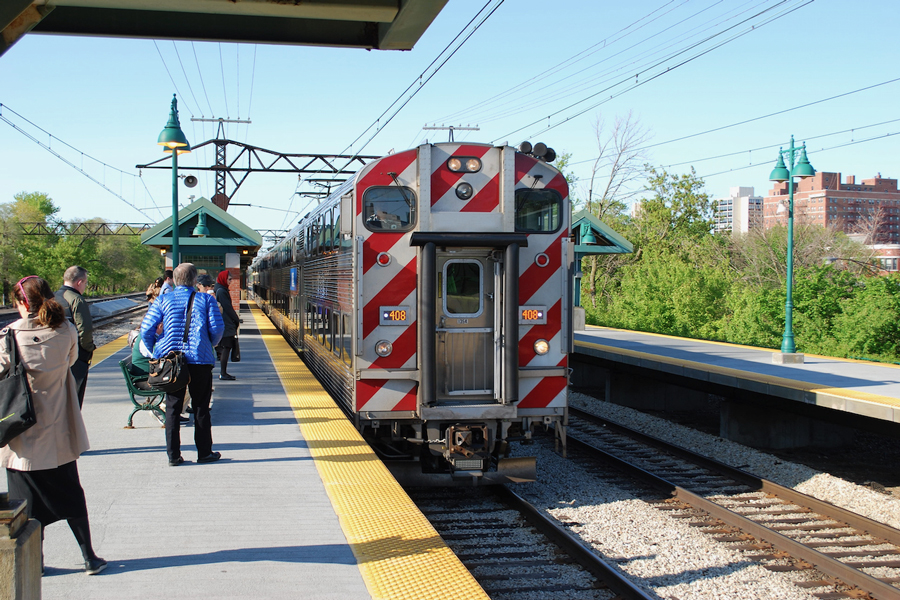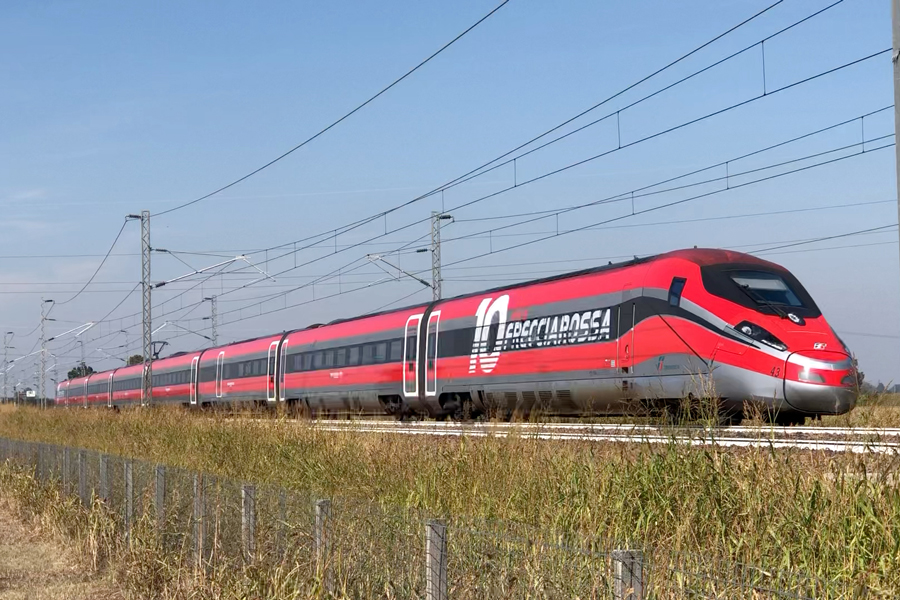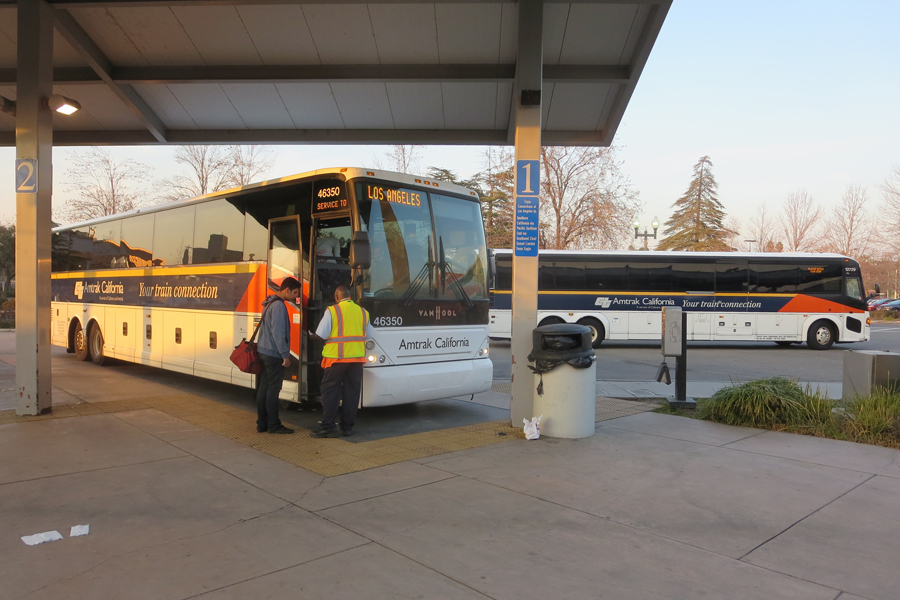It should be practical and affordable to travel by train and/or bus throughout the state.
Passenger trains already operate on most of the routes needed for a vibrant passenger rail network.
But the schedules are too focused on trips to downtown Chicago, and the trains are too infrequent to serve intermediate stations well.
Its time to change that. Illinois needs a rail plan designed to connect the entire state.
California is the first and only state (so far) to create and fund such a plan.
Illinois can learn from its example and follow its lead.
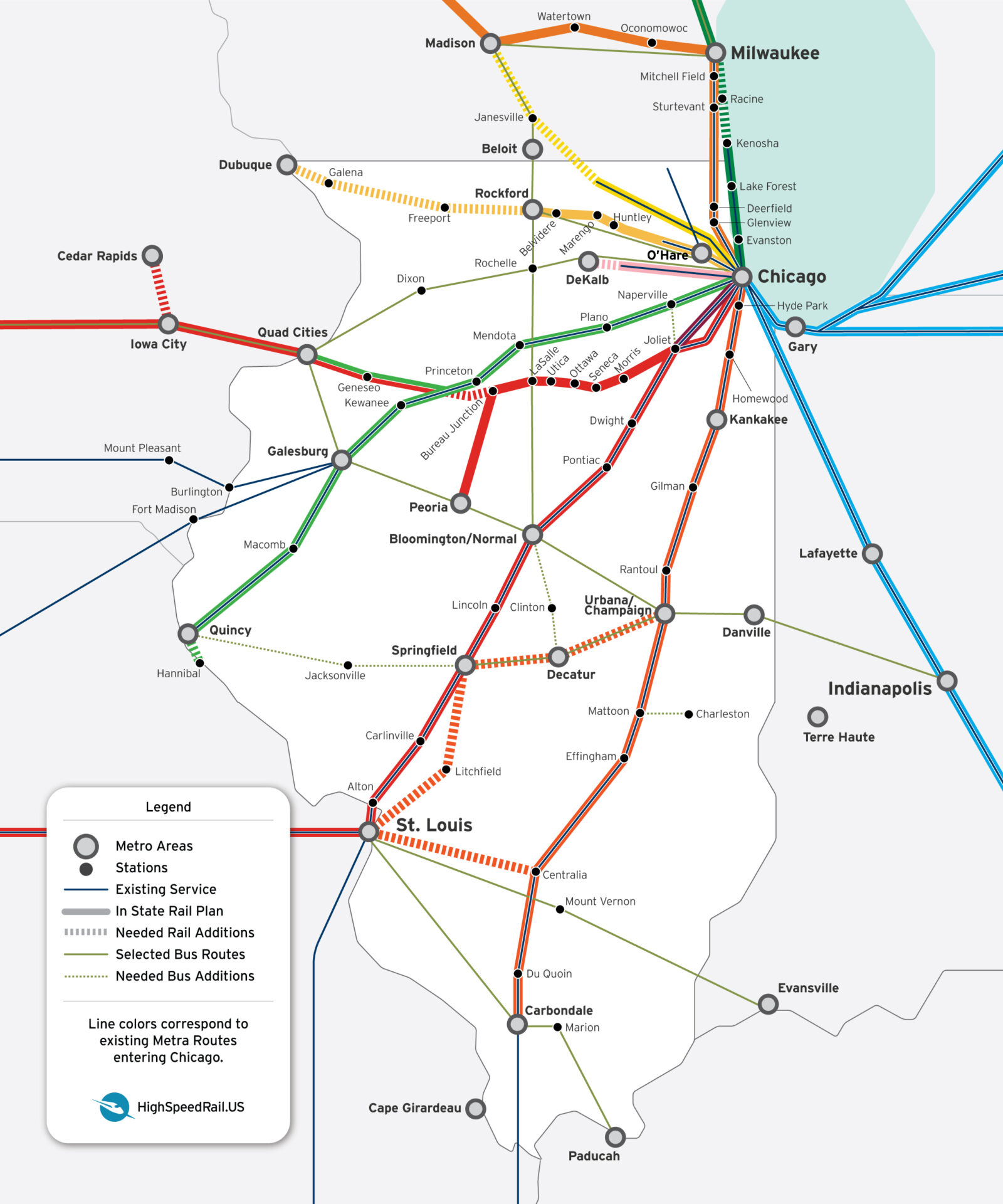
The Goals
The big-picture goal is to make it practical to travel by train and/or bus from any metropolitan area to any other metropolitan area—any time of day.
- All major cities an easy, fast ride to Chicago, O’Hare or Springfield
- Connecting all metropolitan areas with same-day round-trips
- Chicago to St. Louis in only 2 hours at 220 mph
- Easy access to O’Hare
Illinois has state-rail plan that could help change that—in theory. Unfortunately, it’s just a list of disconnected projects. They aren’t integrated into a true plan. And they aren’t coordinated for maximum impact.
We need a visionary, integrated plan. And we need state funding to back it up.
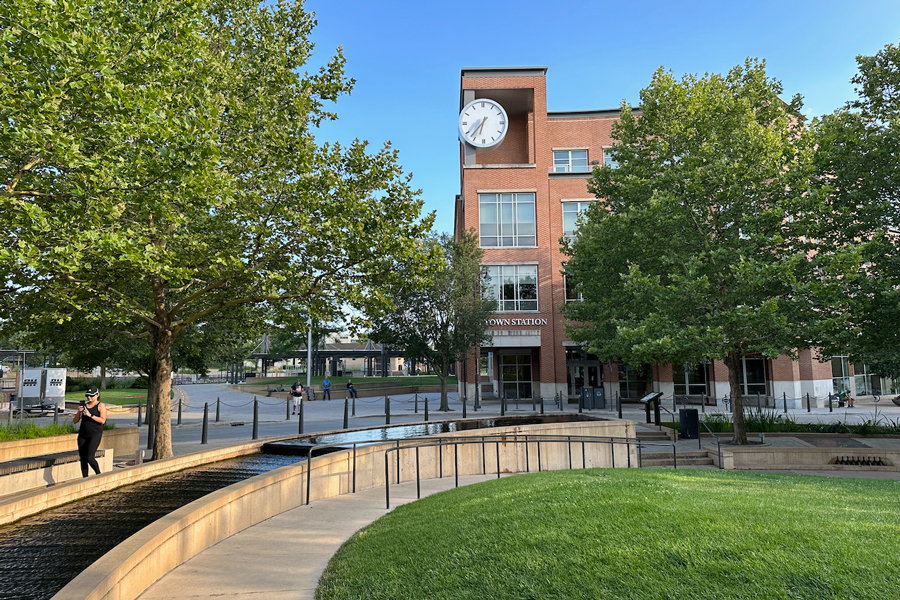
Building Prosperous Communities
Normal is thriving after redesigning its downtown around a new train station and the increased speeds and frequency of its Amtrak service. Now it offers affordable housing, good jobs, and a high quality of life—and it’s an easy train ride to Chicago.
A state railway program would repeat this success statewide.
It Starts With an Integrated Network Plan
Having a big-picture plan for building a train network is transformative—for three reasons.
First, it allows multiple types of trains and buses to work together in a tightly integrated, web-like system.
Second, the network can be built in phases—starting with the highest-impact projects.
Third, a big-picture plan makes each individual route more useful to a range of people and political constituencies. That’s because each route is coordinated with a dense network serving a broad mix of travelers—workers, families, students, and businesspeople—who need to get to a variety of destinations.
As the network grows and expands to serve more communities, a virtuous cycle develops. More ridership drives more investments in improving each route, which increases the network’s overall usefulness, which drives up ridership on each route, which drives more investments—and so on.
When rail routes are planned and operated in isolation from a network, none of that happens. That’s the cost of limited thinking and a failure to plan.
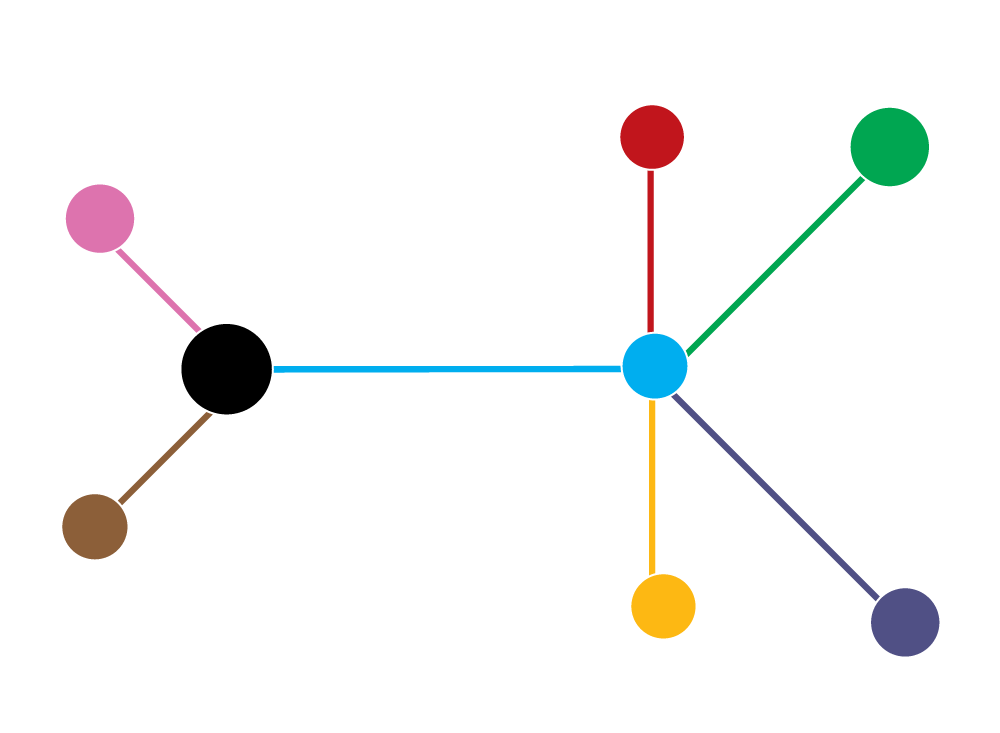
Typically, transit planning looks at each segment independently. Each segment has few opportunities for use. Therefore, each segment appears to have low ridership potential.
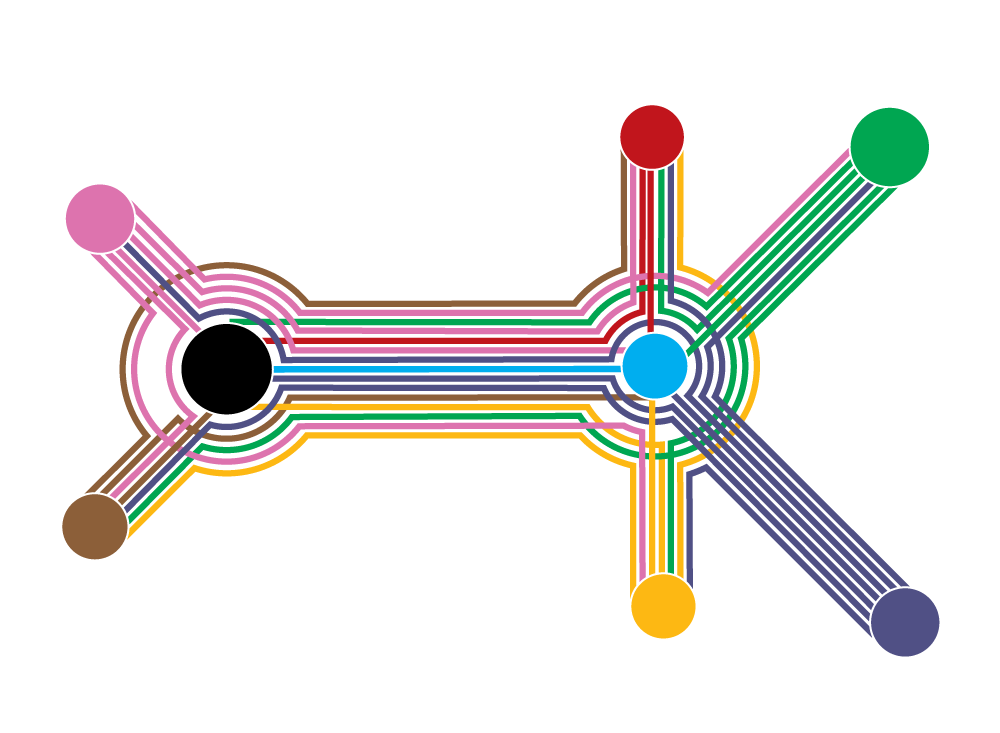
When connecting between trains and buses is easy, each segment offers many more opportunities for use. The whole system becomes more useful, more financially viable, and has stronger political backing.
Success Factors
Frequent Departures, All Day
Trains need to run often, all day, to give you the flexibility to travel when you want.
At least one train every 15 minutes in Cook County, at least every two hours downstate.
Timed Connections
Trains and buses should meet each other at key transfer points, like Champaign, Galesburg, and East St. Louis, to make cross-state trips convenient.
Affordable Fares
When the price is right, trains’ speed and comfort make them the easy choice. And frequent service is critical to keeping fares low. When a rail network is more useful to more people—for more purposes—ridership grows and revenues climb.
Fare and Schedule Integration
Buses and trains need to work closely together, that means making it easy and affordable to make connections.
Integrated Network Components
An integrated rail network in Illinois would consist of these parts–well coordinated to offer fast, frequent, and affordable travel to every corner of the state. The network would support, and be supported by, better local transit and more walkable communities.
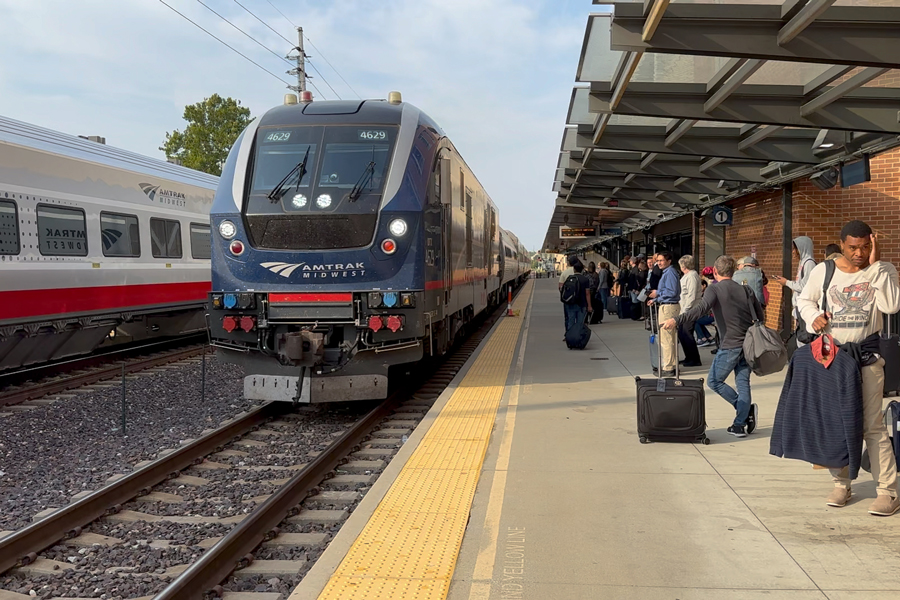
Downstate Regional Rail
- Up to 110 mph on shared freight track
- Link cities and towns of all sizes
- Some trains could include amenities for long distance trips; others could feature denser seating for short commutes
Metra Regional Rail
- Different service patterns tailored to each route
- Designed to serve many types of trips, throughout the day
- Easy connections through downtown
- Extend beyond traditional RTA service boundaries
High-Speed Rail
- Reach up to 220 mph on high-speed, grade separated, electrified lines
- Serve the needs of different riders—from premium express service to lower-cost local trains
- Amenities like business class and cafe cars
Regional Buses
- Extend the network to cities and towns not on the core rail network
- Arrive and depart in sync with connecting trains
- Included on the same ticket with connecting train
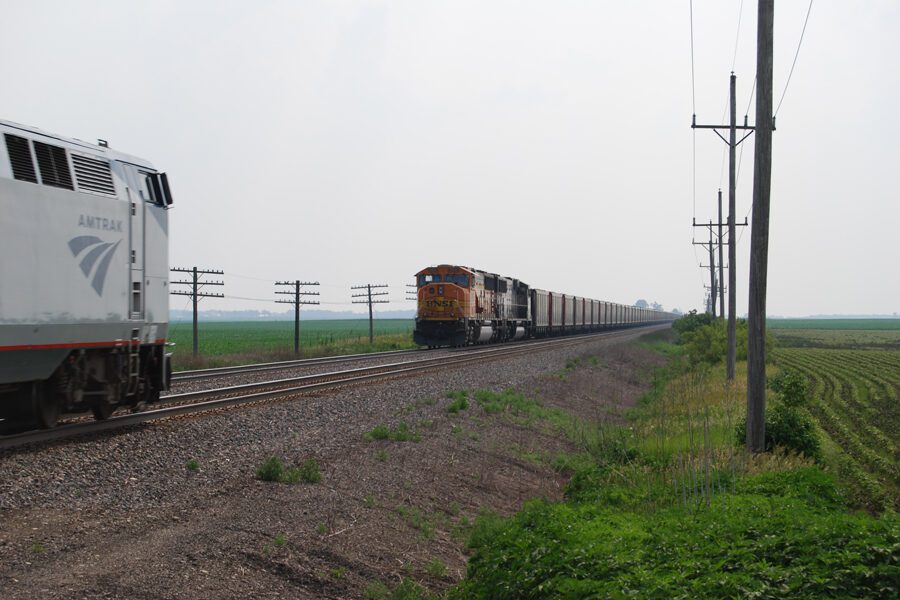
A statewide railway program would improve both freight and passenger rail.
Expanded Freight Service
One critical but overlooked way a statewide rail plan improves passenger-rail service is by improving freight-rail service.
When freight-train conditions deteriorate, the ripple-out effects make passenger-rail worse. And the same is true in reverse. When infrastructure investments improve freight-rail systems, passenger trains run faster and with fewer delays. It’s a classic win-win.
But that can happen only with an integrated plan.
Who has done this before?
California has been investing heavily in passenger rail, intercity buses, and local transit since 1990. They published the first integrated rail plan in 2018. And, they have two high-speed rail projects underway.
California is seeking a 10-fold increase in train and bus ridership!
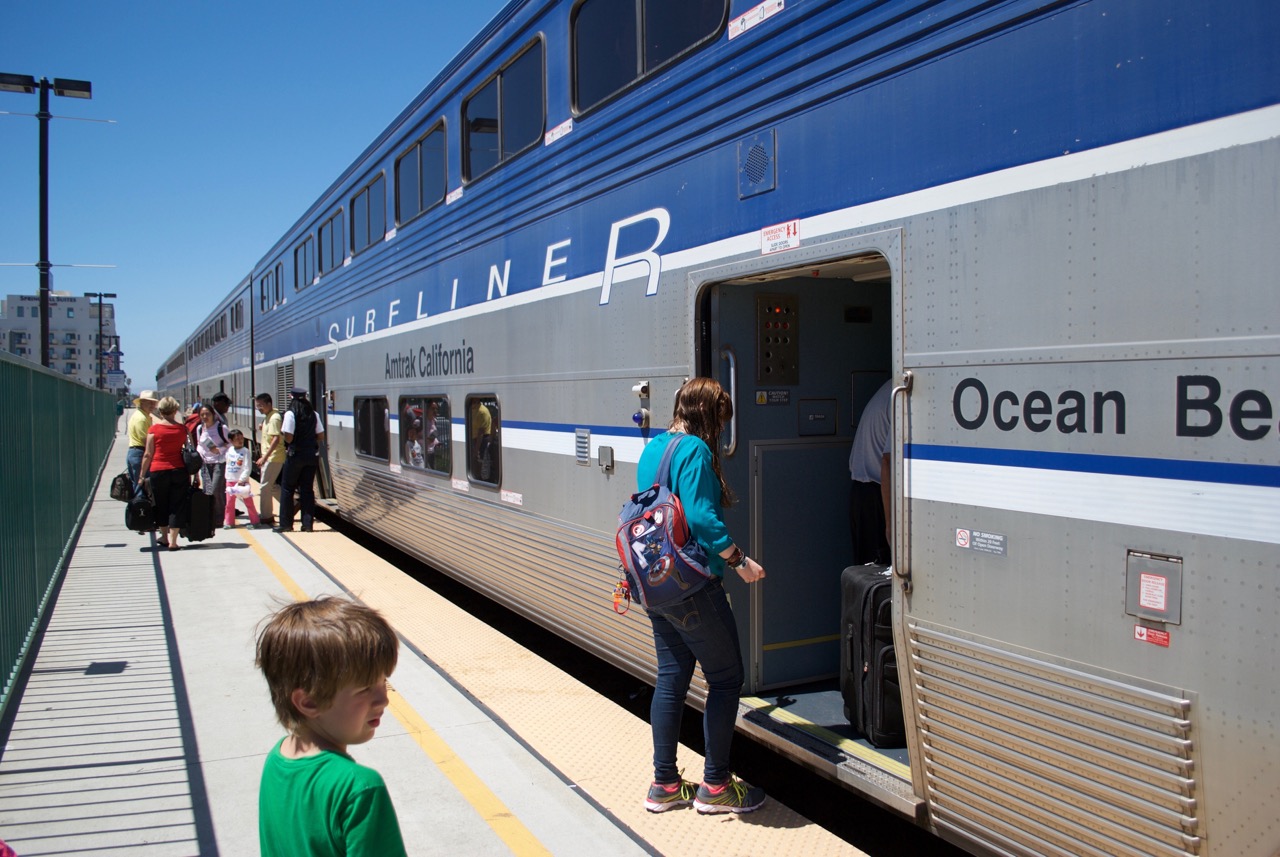
California’s Surfliner offers 16 daily departures.
What needs to happen?
The Illinois High Speed Railway Commission is creating the first draft of an integrated plan. The Illinois General Assembly needs to create a statewide railway program to finalize the plan and build the needed infrastructure.
The General Assembly is likely to pass legislation increasing transit funding in the spring of 2025. They should include a statewide railway program.
Here’s how you can help
Sign the Petition
Ask Springfield to create a statewide railway program, guided by an integrated plan.
Get a local government to endorse
Download a sample letter you can give to your mayor or city council.
Join Us
Join thousands of advocates across the state working to make fast trains a reality.
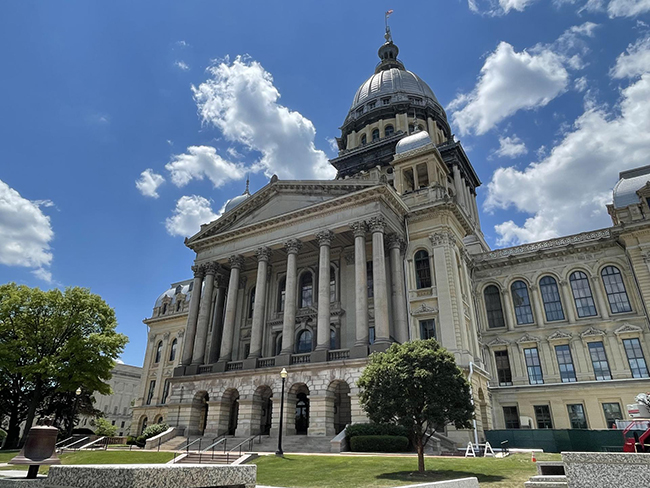
Get Involved
The Illinois General Assembly is debating the future transit and regional rail right now. The package should include a State Railway Program to invest in bridges, trainsets, and better track.
